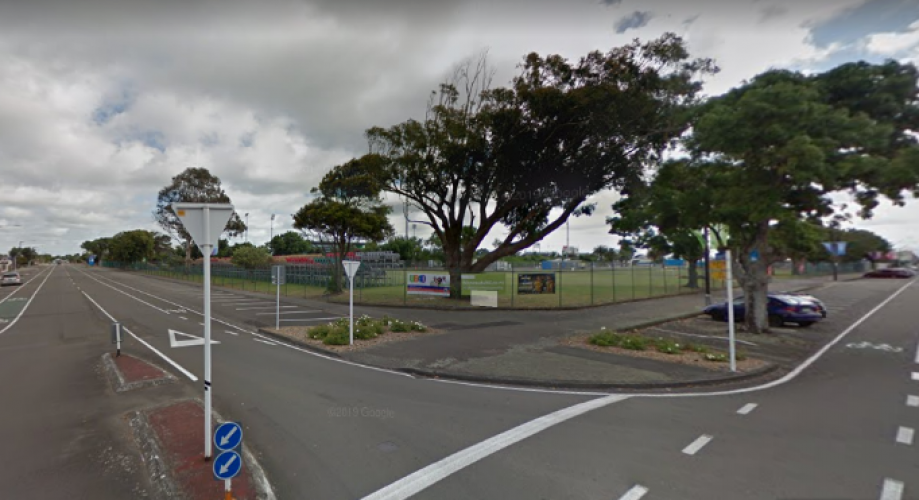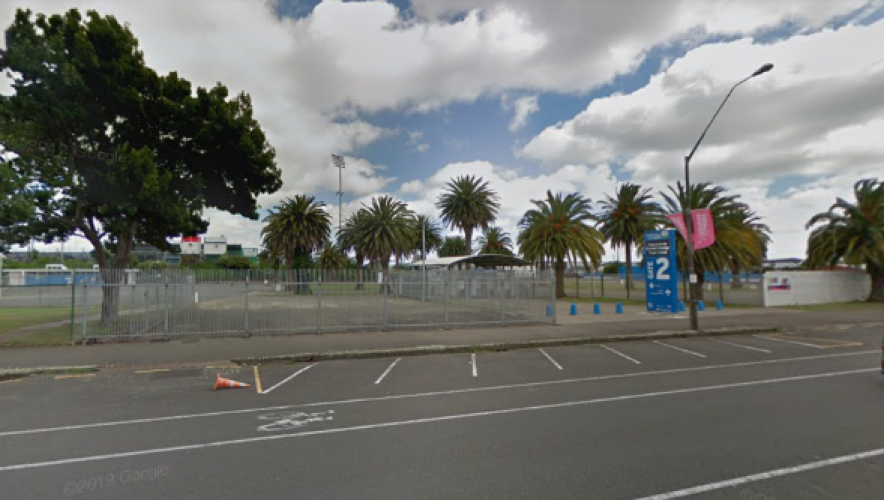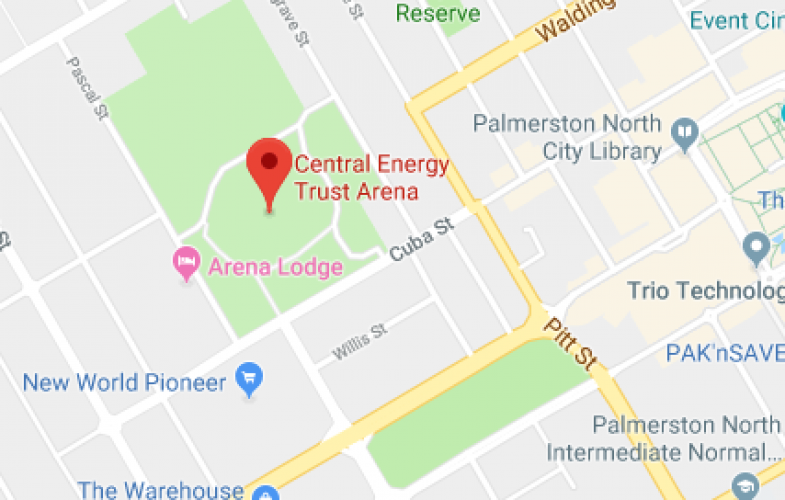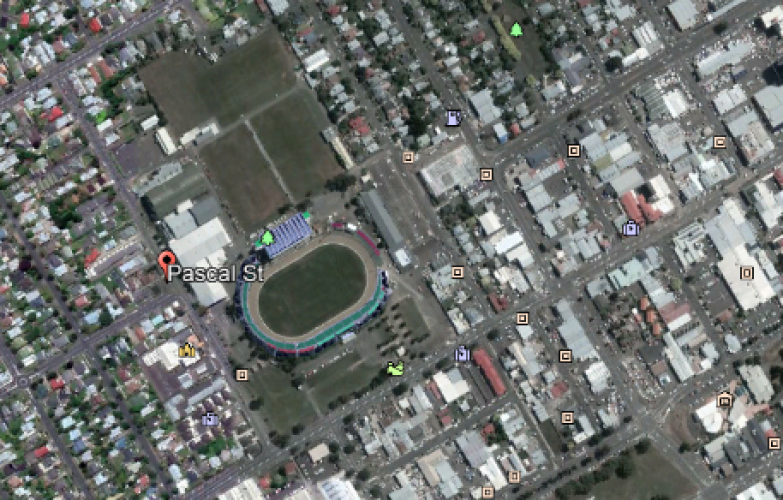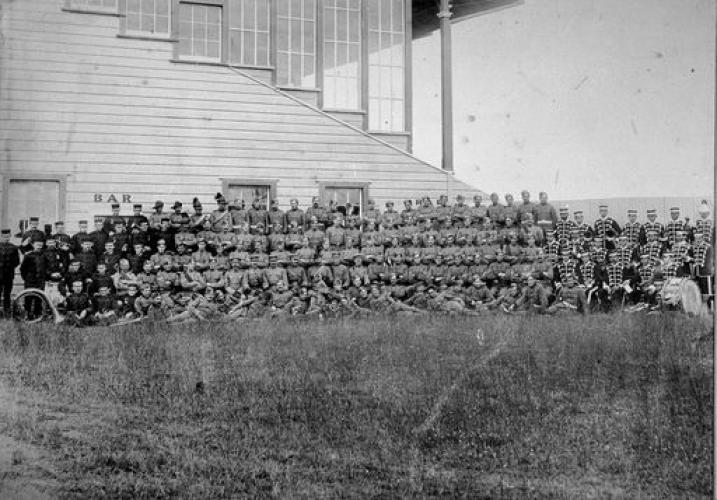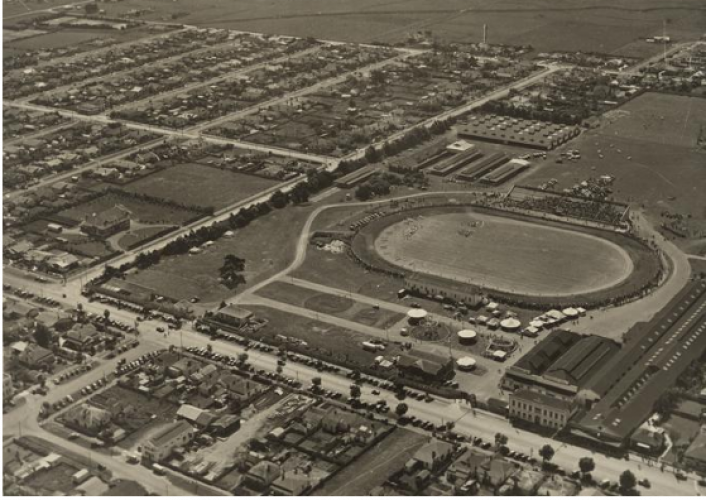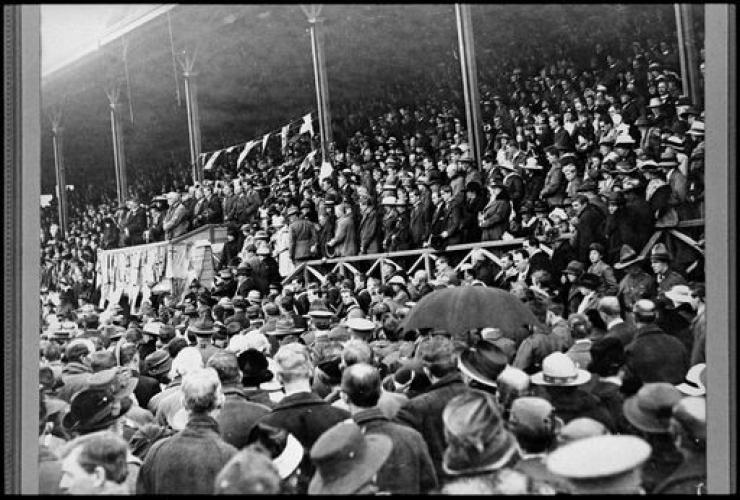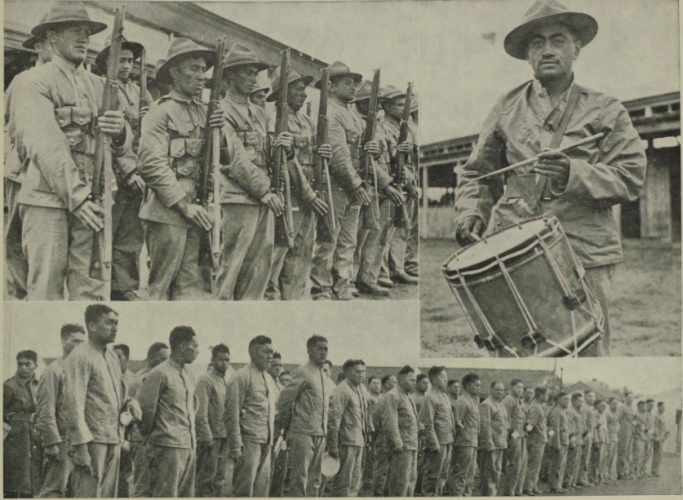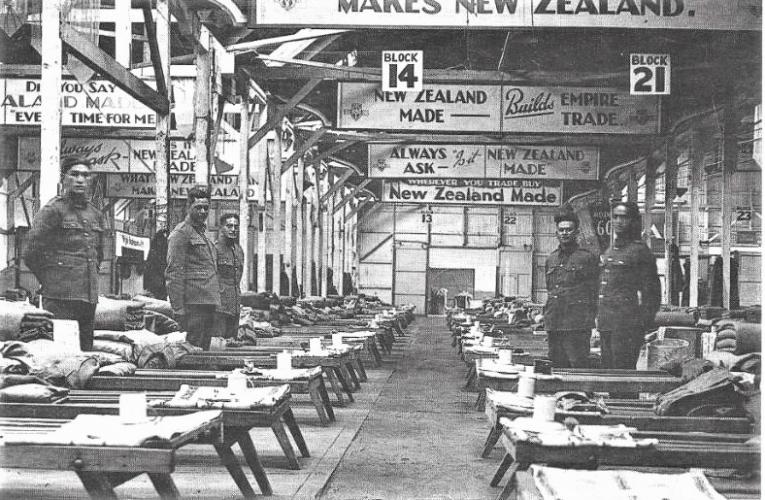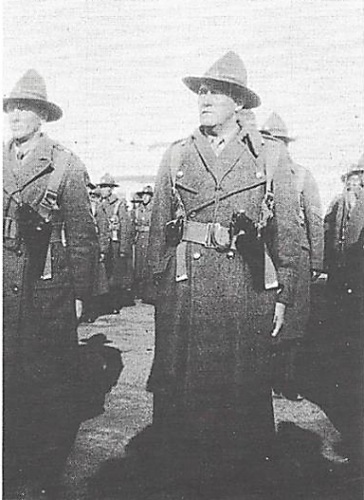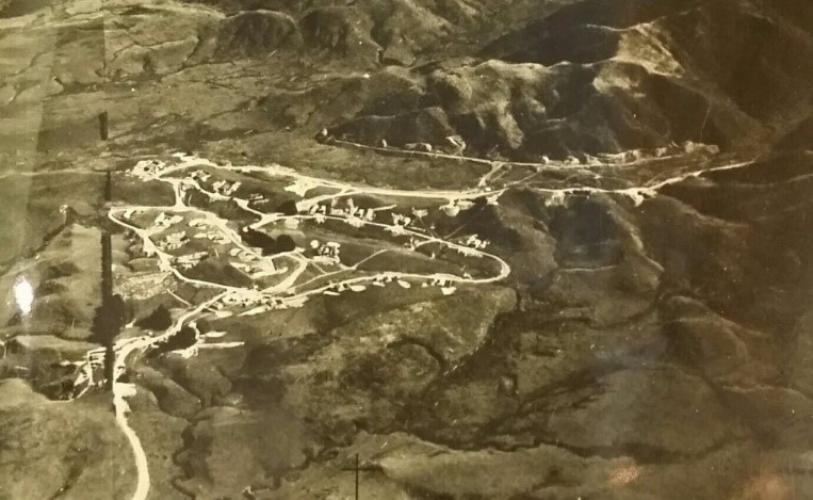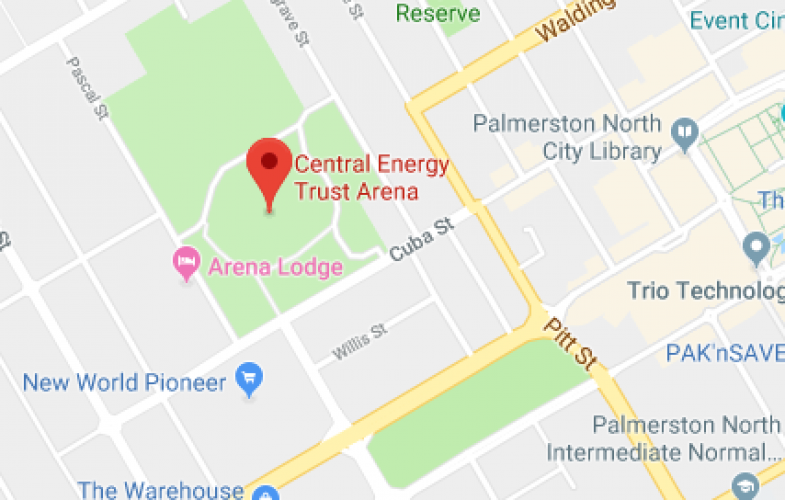210 Central Energy Trust Arena Palmerston North, map of the sports arena
Reason for the name
The Central Energy Trust Arena was previously known as the Palmerston North Showgrounds during both world war years. The grounds were used for military tournaments in the early 1900s and then as a remount depot for horses and a camp during World War 1. In World War 2 the 28th Māori Battalion and other units assembled at the Showgrounds for months of military training prior to embarkation.
Central Energy Trust Arena is the current name of the 180,000 square metre publicly owned recreational complex just west of the Palmerston North city centre in the Manawatu-Wanganui region. It has three linked indoor stadiums, with movable tiered seating. Outdoor facilities include football fields and a speedway track with grandstand.
Central Energy Trust Arena has a deserved reputation as being both the busiest and most versatile events and activities complex in New Zealand. Handling around 8000 individual event/venue bookings annually, it has an unparalleled 36 different sporting codes being conducted regularly along with trade shows, exhibitions, weddings, dinners, conferences, conventions, meetings, seminars, festivals, concerts and leisure events.
Central Energy Trust Arena is the primary sporting and events complex in the lower North Island. It is prominent throughout New Zealand as the foremost multi use leisure and events facility. Right in the heart of Palmerston North city, just seven minutes walking distance from the CBD, Central Energy Trust Arena is a favourite choice for events with a significant visitor component. The park like environment boasts 33 individual indoor and outdoor venues within the 18 hectare site.
Author: LESLEY COURTNEY, Heritage Team Leader and The Poppy Places Trust
Military Tournaments and the First World War
Regular military tournaments took place at the Palmerston North Showgrounds in the early 1900s. For example, on 12 February 1901, the Imperial Representative Corps paraded in the Square with the Manawatu Mounted Rifles and the Palmerston North Rifles. The parade concluded at the Showgrounds with military displays. An estimated crowd of 12 000 observed the parade. On 3 January 1911, a large Naval and Military Tournament took place at the Palmerston North Showgrounds with crowds numbering 7000 to 8000.
From 1914, the Showgrounds were used as a remount depot and then used at regular intervals as a stop-over for men going to other various military camps. Peace celebrations marking the end of World War One were held on 19 July 1919, having been delayed due to the influenza epidemic. Military groups paraded around the Square and speeches were conducted at the Showgrounds. All schools were represented with about 800 children in attendance. Overall a crowd of about 7000 packed the Showgrounds.
Second World War and the (28th) Māori Battalion
The 28th (Māori) Battalion was formed as part of the 2nd New Zealand Division, the fighting arm of the 2nd New Zealand Expeditionary Force (2NZEF) during the Second World War. Major George Dittmer was appointed Commanding Officer. On 25 January 1940 the Battalion first assembled at the Palmerston North Showgrounds for military training, which continued for three months. On the 2nd May 1940 the 28th (Māori) Battalion marched to Palmerston North Railway Station for embarkation. Huge crowds gathered to farewell the soldiers. 681 men sailed from Wellington with the 2nd Echelon of 2NZEF aboard the famous luxury liner Aquitania.
During the wartime period, the Palmerston North Showgrounds were also utilised at different times by the Manawatu Mounted Rifles, HQ 2 Brigade, HQ 4 Division, 2 Army Service Corps Company and No 2 Sub Depot, New Zealand Army Ordnance Corps.
NZ Army Ordnance Corps No 2 Sub Depot
The Palmerston North Showgrounds was a sensible place to locate the Central Districts Ordnance Depot. Situated between Featherston, Waldergrave, Pascal and Cuba Streets, the showgrounds were only a few hundred meters from the Palmerston North Railway yards, which were at the time located in what is now the Railway Reserve on Pioneer Highway. This would have provided easy access for the receiving of goods, not only from the Main Ordnance Depot in Trentham but also from other suppliers from all over the country, and for the dispatching of goods to subordinate units all over the lower North Island by rail and road.
The showgrounds had some of the most significant covered spaces in the region with 5 exhibition halls under one roof and much hard-standing for vehicles and other defence stores. To house the Maori Battalion and other units, cookhouses, dining halls, accommodation (huts and tented) and ablutions were established.
In the early years of the war occupancy of the showgrounds was seen as a temporary arrangement with the Manawatu Agricultural and Pastoral Association retaining part occupancy of the facility. By late 1941 the war with Japan was becoming a growing reality and it was decided that the military should have full occupancy of the showgrounds for the duration of the war.
After the 20th August 1942, the Central Districts Ordnance Depot was renamed No 2 Sub Depot and was situated on the Waldergrave Street side of the showgrounds, in the five large exhibition halls, which were practically under one roof. Hall 1 was stocked with a vast quantity of clothing including boots, tunics, great-coats and underwear. Hall 2 was stocked with tools, spare parts, and expendable stores. There was more hardware including tons of nails, wire, rope, paint, thinners and linseed oil which was more than what was stocked by all the merchants of Palmerston North put together. Hall 3 was stocked with a lot of camp fittings, crockery, cutlery, sheets, blankets other types of household linen by the thousands. Hall 4 and 5 contained practically every type of Army stores required including rifles and machine-guns.
Flammable goods, such as paints, turpentine and kerosene kept in steel drums were initially stored in the main buildings. It was not until 1943 when suitable buildings with concrete floors and iron walls and roofs were provided.
Explosives and Ammunition were also stored at the showgrounds until 1943 until construction of the Makomoko ammunition area was completed.
As the buildings were filled to capacity, often with stock stacked to the ceilings, two night watchmen were maintained to provide security and a fire picket during the silent hours. Close liaison was maintained with the Fire Brigade, and inspections carried out on many occasions to examine the fire hazard. The Army’s first aid equipment was in good order and consisted of buckets, bucket pumps, hoses and fire extinguishers. The method of storage was the best under the circumstances, with flammable goods stacked between non-flammable products in an attempt to provide fire breaks in the event of a fire. The Fire Brigade made many recommendations about the reduction of the fire hazard, and these recommendations were always acted on. Guidance for the installation of an automatic alarm system was not made by the fire brigade because it was considered that the precautions taken at the time were adequate.
The Big Blaze
On the 31st of December 1944, the Palmerston North fire brigade superintendent, Mr Milverton was tracing faults to the city general fire alarm system. The fault had been located at the Show Grounds and was determined to be caused by vibration caused by heavy motor traffic, as a temporary measure until the fault could be rectified, it was decided to cut out the Show Grounds loop from the alarm system. The military authorities were advised of the steps taken, and the alarm boxes were marked ‘Out of order’.
At around 2130 hrs Sergeant W. C. Luffman, Senior NCO of the Showgrounds guard conducted his patrol and found nothing amiss. On the next scheduled patrol at 2230 hrs in the cookhouse, a copper used for the heating of water was found empty and red hot with the gas under the copper alight, and as a result, a piece of wood on the wall was alight. Turning the gas off, Sgt Luffman went to the main gate and instructed a Private Wagstaff to assist him. Utilising a stirrup pump, they extinguished the burning timber. Satisfied that they had put the fire out, Private Wagstaff filled the copper with cold water and felt the iron around the site of the fire, finding it quite cold. The stirrup pump was refilled and left near the copper as a precaution against repetition.
Conducting another patrol at 2335 hrs, Privates Wagstaff along with Private Collins the Ordnance night watchman were instructed to examine the wall in the neighbouring Ordnance Store opposite to where the fire had been. Sergeant Luffman went back to the kitchen, finding conditions normal and no sign of fire and satisfied that all was well returned to the guard house. Reaching there about 2355 hrs meeting up with Private Collins who reported no issues on the ordnance side of the wall.
Waiting at the guard house until midnight and wanting to contribute to the new years’ festivities by blowing a siren at the gate Sgt Luffman saw a glow in the sky near the Ordnance Depot. Unsure if this was from the Ordnance Depot, he rushed into the guard house to telephone the fire brigade, only to receive no reply, as the alarms had been disconnected due to the fault earlier in the day there was no way to contact the brigade.
Luckily local citizens saw the fire and notified the brigade and Sgt Luffman soon heard the sirens of the approaching engines. They found the fire in the building beyond the cookhouse, which was the Ordnance Store. It was well alight, and flames were breaking through the roof. Three motor engines would eventually respond, finding on their arrival that the fire had a good hold and it was not until midday that it was finally extinguished. A row of six dwellings which faced Waldegrave Street, but backed onto the showgrounds were dangerously close to the fire and the administrative offices of the A&P Association were saved but only after tons of water had been poured into and over them. Halls 1, 2 and 3 were lost but halls 4 and 5 remained intact. At the time it was the most significant fire that the Palmerston North Fire Brigade had dealt with.
Aftermath
Evidence submitted to the inquiry conducted in March 1945 by the Officer Commanding the Ordnance Depot, Captain W. S. Keegan put the stock loss at £225,700 ($18,639,824.86 at 2018 value), with a considerable amount of stock able to be salvaged. Lost in the fire was almost the entire stock of around 1500 Charlton Automatic Rifles, a successful New Zealand conversion of the Lee–Enfield rifle into an automatic rifle, only a handful survive today.
There was some suspicion that the fire was deliberately set to cover up thefts from the depot, but these were discounted by Captain Keegan. In his evidence, he stated that the total value of all stock at the depot at the end of December 1944, was £1,100,000 ($90,845,402.49). Thefts from the Depot up to the time of the fire were very small, and the more significant part of the overall deficiencies was the result of miscounting. In two years and nine months, the losses from all sources amounted to £627 ($51,781.88) For the same period, there was brought on charge surpluses to the value of £1,600 ($132,138.77), and thus surpluses outweighed the shortages by about £1,000 ($82,586.73). Captain Keegan detailed the accounting system of charging for goods and based on his knowledge there was no suggestion that the fire was started to conceal shortages.
Detective F. Quin of the NZ Police gave evidence of the widespread and exhaustive investigations into the possible causes of the fire but was unable to produce any further relevant information which had not already been placed before the Court. No evidence could be found of sabotage, incendiaries, or any interference like that. No person could be found who had lit the copper found burning by Sergeant Luffman.
It was fortunate that the fire occurred in 1944 by which time the threat of invasion had subsided, and the bulk of the Territorial Army, Home guard and other Home defence forces had been demobilised, so the loss of the stores was negligible to the ongoing operations of the Army.
Royal New Zealand Engineer Activity
The Wellington Engineer Volunteers (WEV) used to come to Palmerston North for regular military tournaments, comprising improvised bridging, skill at arms, sapper skills, shooting, etc, from around 1906 onwards and these were always held in the Showgrounds. It seemed that Boxing Day was also a popular day for these events to be held for the local community. At the Engineer Corps Memorial Centre (ECMC) museum in Linton Camp there is a photograph of such a military tournament held on 9 November 1908, where the WEV were engaging in an improvised bridge building competition. There is also the Scots Cup, being a silver trophy awarded to the winning WEV team from 1908, for such activities. The photograph and trophy are being re-used in PNCC events to promote the close link between WEV/RNZE and Palmerston North, over the past 110+ years.

